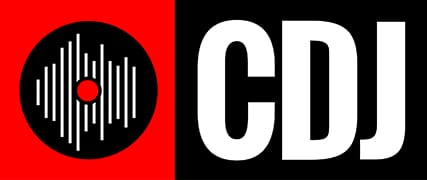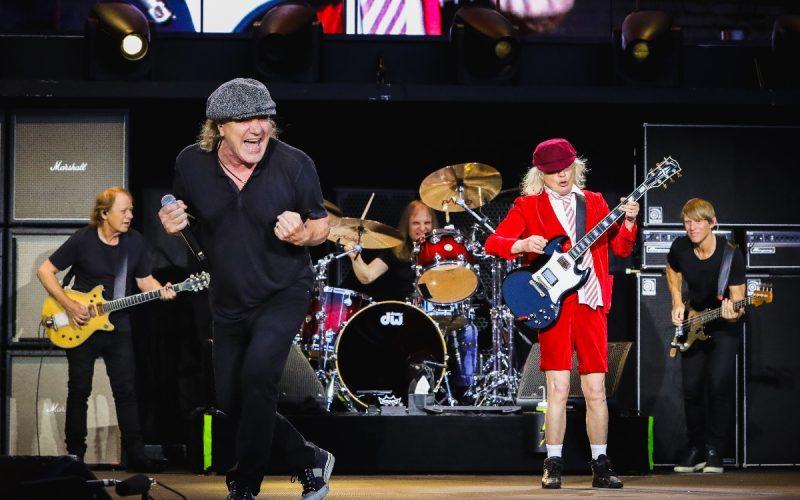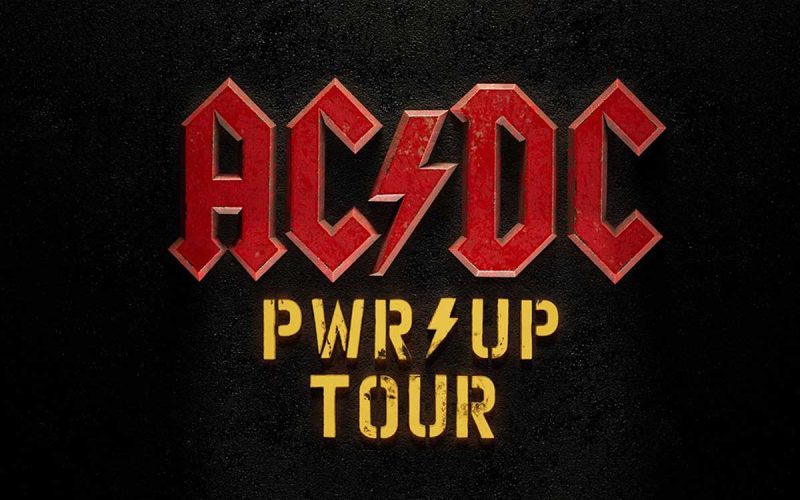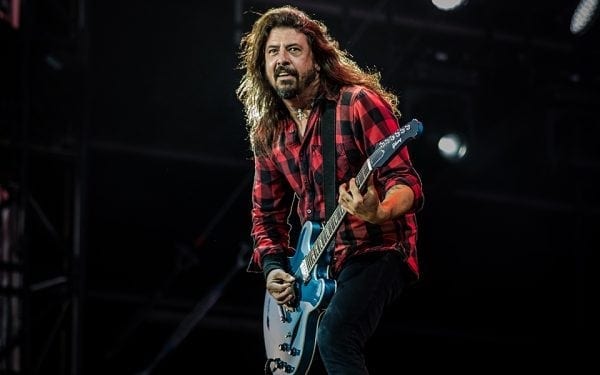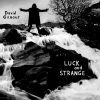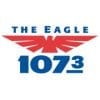 Musical genius and sheer graft alone didn’t make AC/DC the biggest rock band in the world. It is also required the support, commitment and individual talent of key people behind the scenes. The Youngs: The Brothers Who Built AC/DC author Jesse Fink nominates 10 figures who mattered in the AC/DC story.
Musical genius and sheer graft alone didn’t make AC/DC the biggest rock band in the world. It is also required the support, commitment and individual talent of key people behind the scenes. The Youngs: The Brothers Who Built AC/DC author Jesse Fink nominates 10 figures who mattered in the AC/DC story.
1 MUTT LANGE
The perfectionist producer behind Highway to Hell, Back in Black and For Those About to Rock (We Salute You). AC/DC never sounded as consistently good as it did on those three key albums, Lange conspicuously improving background vocals (“Highway to Hell” a prime example) and bringing to the recording process a new emphasis on “space”. The dynamics on those albums have never been bettered and listeners agreed: Back in Black is the second-biggest selling album of all time. It wasn’t enough to save Lange from the chop. He was axed after For Those About to Rock (1981) and has barely said a word about AC/DC since.
2 GERARD HUERTA
The designer of AC/DC’s iconic logo: one of the great logos of all time, not just in rock music but also big business. Based on the letterforms of the Gutenberg Bible and inspired by a similar logo he did for Blue Öyster Cult, Huerta produced the logo for the US issue of Let There Be Rock in 1977 – for which he got a one-off fee. AC/DC went away and used another logo for 1978’s Powerage then came back to Huerta’s logo for Highway to Hell. It’s been used on anything to do with the band ever since. Huerta has not received a cent in royalties for its use in any of the band’s merchandising and is still waiting for his first phone call from the Youngs.
3 MICHAEL KLENFNER
A senior vice-president at Atlantic Records during the key years when AC/DC was trying to break in America, Klenfner was regarded by many who worked with him at the record company as the band’s biggest champion. The support was crucial: AC/DC was at one point in danger of being dropped altogether. However his “bull in a china shop” manner didn’t endear him to some colleagues and ultimately would see him butt heads with Atlantic president Jerry Greenberg over the choice of producer for Highway to Hell. Klenfner wanted Eddie Kramer. Greenberg wanted Lange. Klenfner came off second best and was fired after having a verbal altercation with Lange’s manager, Clive Calder. Klenfner died in 2009.
4 TONY CURRENTI
The session drummer for every track but one on AC/DC’s first album, High Voltage, and the single “High Voltage” which came afterwards. Three Currenti drum tracks featured on the band’s first American release, High Voltage (1976), a combination of their first two Australian albums. Three Currenti drum tracks also appeared on the 1984 EP ’74 Jailbreak. Sicily-born Currenti was asked to join AC/DC but turned down the offer because he feared being conscripted into the Italian army if he travelled with the band to England. He has not been credited on any AC/DC albums and today runs a pizzeria in Sydney, Australia. After 38 years away from music, he returned to playing drums in early 2014 and his great wish is to meet the Youngs again. He’s a superb drummer. The Italian Charlie Watts.
5 PERRY COOPER
Klenfner’s lieutenant at Atlantic – indeed he came to the record company from Arista with Klenfner as a team in 1977 – head of artist relations Cooper was a popular figure with AC/DC and was the name on Bon Scott’s emergency-person-to-contact card, according to his daughter Renée. Cooper was a driver, along with Judy Libow, of the Live From the Atlantic Studios promotion in 1977, engineered by future Jay-Z and Justin Timberlake engineer Jimmy Douglass, that went out to American radio stations and helped get the band critical airplay before they broke with 1979’s Highway to Hell. Cooper remained close to the band after Bon Scott’s death in 1980. He died in 2005.
6 MARK EVANS
Bass player Evans is commonly regarded by fans as part of the “classic” line-up but was unceremoniously dumped before their maiden tour of the United States in July 1977. Between 1975 and ’77 Evans played on the lion’s share of the original recordings that make up AC/DC’s “greatest hits”: songs such as “TNT”, “Dirty Deeds Done Dirt Cheap”, “It’s a Long Way to the Top”, “Let There Be Rock”, “Whole Lotta Rosie” and many more. That wasn’t enough, though, for the Rock and Roll Hall of Fame. When AC/DC was inducted in 2003, Evans wasn’t there to celebrate with them on stage, despite being initially invited. The Hall of Fame withdrew the invitation, claiming he was ineligible. Evans stills plays music and runs a guitar shop in Sydney. He is the author of the autobiography Dirty Deeds: My Life Inside/Outside of AC/DC (Bazillion Points, 2011).
7 BILL BARTLETT
The first man to play AC/DC on the radio in the United States. Jacksonville DJ and program director Bartlett came to Australia as a foreign-exchange student in the early 1970s and got on to the mailing lists of Australian record companies. Bartlett took it upon himself to promote Aussie music on WPDQ/WAIV and not only gave AC/DC its first break on the airwaves well before they released their first American album, he also did the same for Little River Band. When Bartlett went to Seattle in June 1977 to become program director of KISW, he suggested to Steve Slaton that he play AC/DC. Claims that Slaton was the first DJ to break AC/DC on American radio should thus be treated with some skepticism.
8 LEBER-KREBS
The one-time management company of AC/DC, Aerosmith, Scorpions and Ted Nugent, Leber-Krebs (after Steve Leber and David Krebs) was absolutely pivotal in getting AC/DC important support slots for their roster of headline acts, especially Aerosmith. When Michael Browning was discarded as AC/DC’s manager in late 1979, Leber-Krebs’s Peter Mensch took over. Mensch would go on to manage Metallica and Red Hot Chili Peppers and amass a considerable fortune but he cut his managerial teeth on AC/DC and by reliable accounts did a fantastic job. Again, it wasn’t enough for the Youngs. Both Mensch and Leber-Krebs were cut adrift by AC/DC and in my opinion it was a mistake. What immediately followed was a dark period creatively and financially for the band.
9 TONY PLATT
AC/DC has had a bunch of engineers over the years (the great Mark Opitz and Mike Fraser among them), but Platt probably stands tallest with credits on Highway to Hell, Back in Black and the underrated Flick of the Switch (which he co-produced). It was the task of Platt to deal with the ultra-finicky, almost obsessive Lange in the studio and he must have had the patience of Job to do it without going mad. Platt was more into the “feel” of a take whereas Lange wanted it to be perfect. You can hear more of that “feel” on Flick of the Switch and it’s thanks to Platt we have ripsnorters like “Nervous Shakedown” and “Bedlam in Belgium”. Whatever he did with Lange on their albums together (which also included Foreigner’s 4), they were an amazing double act.
10 HARRY VANDA
It might seem strange to nominate one half of Vanda & Young, the legendary Australian songwriters and producers who helmed a stack of classic AC/DC albums, but the limelight-shy Vanda was an integral part of creating the Aussie rock sound with Angus’s and Malcolm’s elder brother George. It was there in The Easybeats, the band Harry played in with George and which gave the world the all-time classic “Friday on My Mind”. It was there in Marcus Hook Roll Band. It was there in Stevie Wright’s solo work. It was there in Rose Tattoo and The Angels. But with AC/DC they perfected it. What I love about early AC/DC is the groove: the handclaps and the percussion. That’s Vanda & Young all over. If Vanda’s name were “Young” he’d be a whole lot better known by fans outside Australia.
Jesse Fink is the author of The Youngs: The Brothers Who Built AC/DC ($25.99) released by St Martin’s Press on August 5 in the United States and Canada. Preorder through Amazon, Barnes & Noble, and iTunes.
